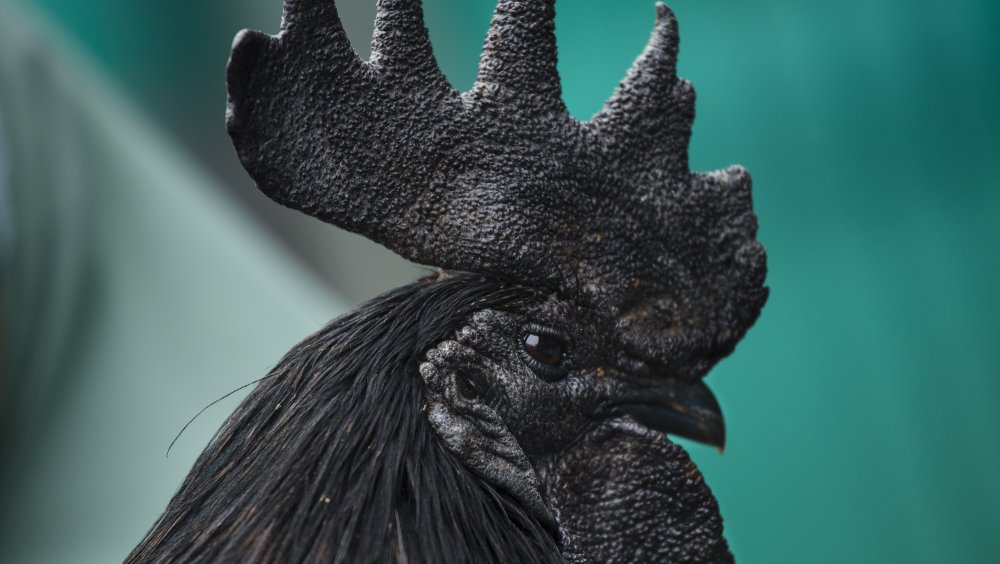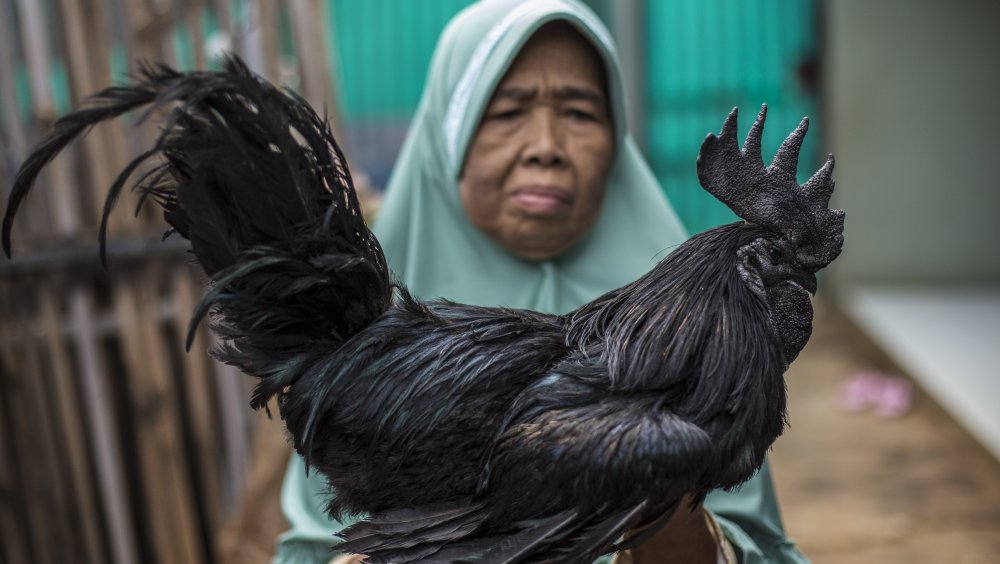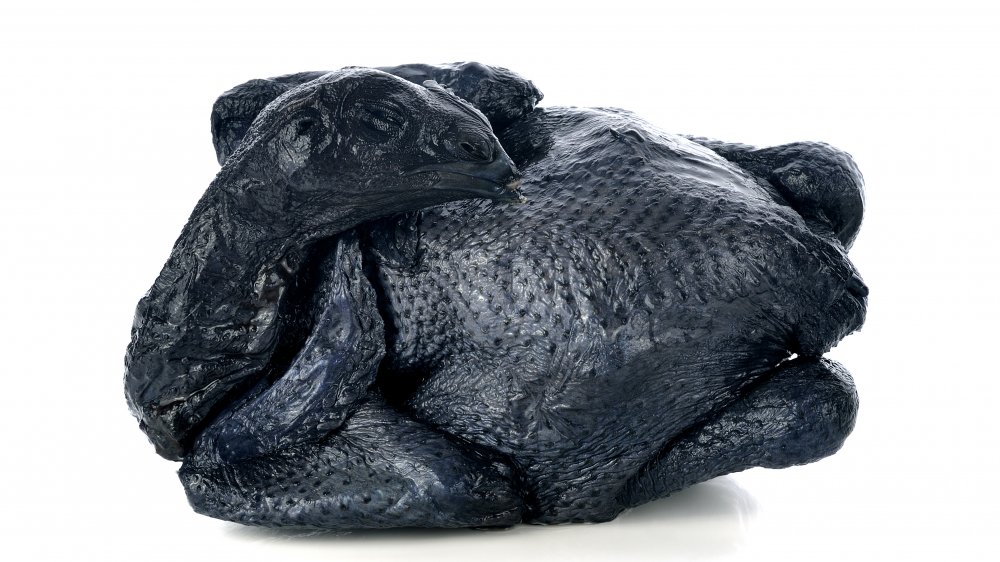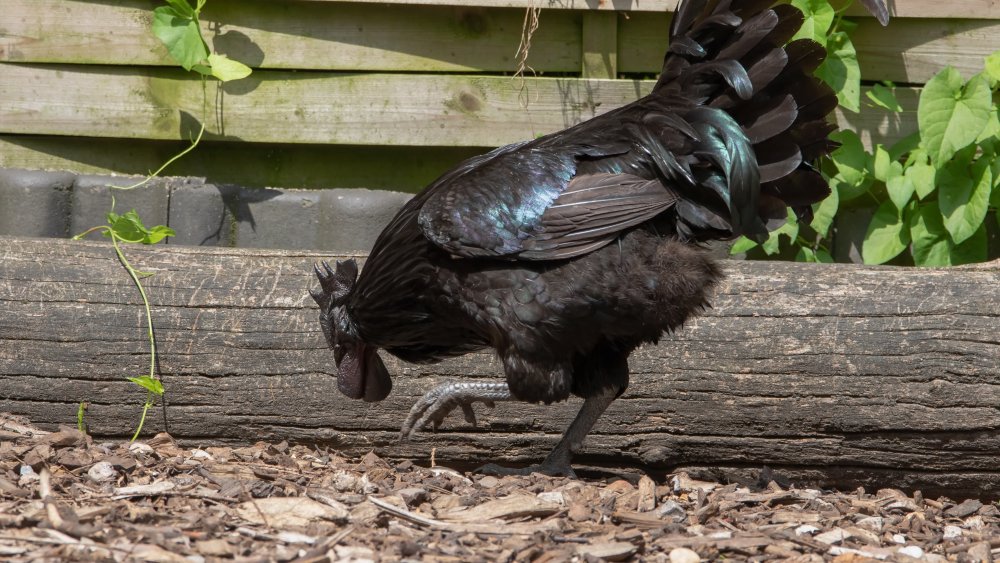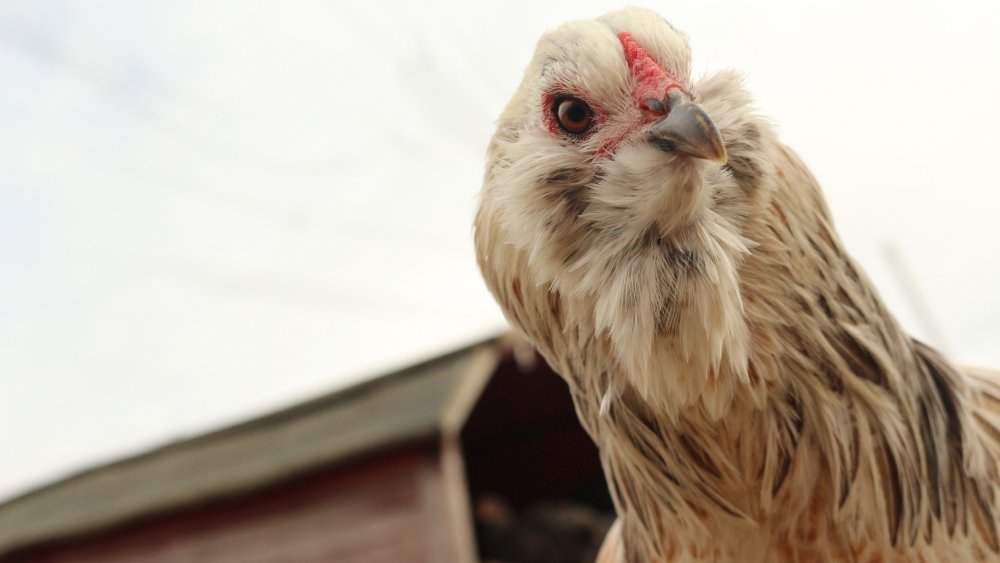The Truth About The World's Most Expensive Chicken
If Tim Burton were a bird, he'd be an Ayam Cemani chicken. Seriously, just look at that fluffy, feathery little dude! Could a chicken possibly be more goth?
These chickens, according to HowStuffWorks, are prized for their innate love of the dark side. Black feathers are one thing, but these crazy birds also have black organs, black muscles, black tongues, black bones (!) and ... well, no, their eggs aren't black, but everything else about them is straight out of Mordor.
Anyhow, while the jury's out on whether these chickens also possess dark supernatural powers, the high cost of purchasing them for your farm — they were, at one point, priced at $5,000 for an adult mating pair — has led to them being marketed as the "Lamborghini of poultry." These high prices are understandable, though, when you realize how beautiful these creatures really are, and the way their black feathers emit an iridescent cascade of colors that would make an artist swoon. It's no wonder that their prestige isn't a new thing: people have treated the Ayam Cemani like royalty for a long, long time.
The rock star of chickens
The Ayam Cemani's home base is the Indonesian island of Java. While ordinary chickens are generally looked at as humorous, squawking creatures, this particular breed of black bird has been prized for centuries, since their mysteriously dark appearance has traditionally been believed to represent mystical abilities. The power that has gained the most notoriety? Their blood. While said lifeblood is scarlet-tinted, rather than black, it's said to have healing qualities. Today, according to Public Radio International, the population of Java continues to revere the Ayam Cemani, and these alleged blood powers are a big reason why.
In Indonesia, by the way, people generally don't want to eat these chickens. As explained by Firdaus, a young chicken farmer from near Jakarta, "Hardly anyone eats them. Most people are interested only in their magical blood."
Fair enough. Now, most Indonesian-born Ayam Cemani are raised in standard bamboo chicken coops, as opposed to the luxury mansions you might expect. To be clear, the supposed healing abilities of a chicken's blood really depends on the chicken, and not all Ayam Cemani are considered equal. While some particularly magical fowl are still sold for thousands of bucks to those in search of a perfect cure for whatever ailment plagues them, the majority of normal Ayam Cemani retail in Indonesia for prices under $100 USD. A lot cheaper than $2,500, eh?
What is the Ayam Semani's dark secret?
Anyhow, if you're wondering how this bird gets its beautiful appearance, it's the result of a condition called fibromelanosis, or dermal hyperpigmentation. There are a number of other chicken breeds with fibromelanosis, most of which are native to Southeast Asia. None of these, from Vietnam's H'Mong to the fluffy-looking Silkie Bantam, are quite as overwhelmingly dark as the Ayam Cemani. For example, while the silky has dark flesh, it's feathers are bright white and fluffy to the point where the Italian explorer Marco Polo described it as having the hair of a cat.
Fascinatingly enough, fibromelanosis is such an odd condition, according to National Geographic, that scientists believe that all these different types of chicken must trace their ancestry back to a single, black bird that was born hundreds (or thousands) of years ago. Talk about an enduring legacy. Luckily, it seems that this mutation doesn't come with any negative health side effects, and if anything — given how much these things are worshiped — it does the opposite, since it ensures they'll probably be treated better than your average poultry.
Why are they so expensive in the U.S.?
People charge a lot of money for black chickens because other people will pay a lot of money for black chickens. Duh.
Delving deeper, though, Nautilus points out that fear is a major factor. Fear of disease, namely, because the U.S. Department of Agriculture bans direct imports from Indonesia due to concerns regarding the avian flu. This means that the gothic chickens are exceedingly scarce on U.S. soil, which allows distributors to charge arms and legs for them. As explained by Paul Bradshaw, the owner of US-based Ayam Cemani distributor Greenfire Farms, "Somebody who plunks down $1,500 for a Williams-Sonoma chicken coop, they want an artisanal chicken breed. They want something special, with a story, something beautiful. That's the market we serve."
These aren't the only quirky chickens out there
Ayam Cemania are the coolest chickens in the world. No argument there. But there is plenty of weirdo poultry out there, of which these charcoal chickens are just one example. For example, take those bearded Americauna chickens like the one above, which are known for laying blue eggs. Such eggs might not possess any mystical powers, but they are exceptionally tasty. Then, you have the Jersey Giant, the largest chicken breed in the world, which stands two feet high, weighs 15 pounds, and is pretty much just a Velociraptor. There's also the Frizzle, which pretty much just looks like a cotton ball pretending to be a chicken.
None of these examples can chip away at the Ayam Cemani's mystique, of course. They just show that it's a groovy world, with a lot of groovy chickens out there.
